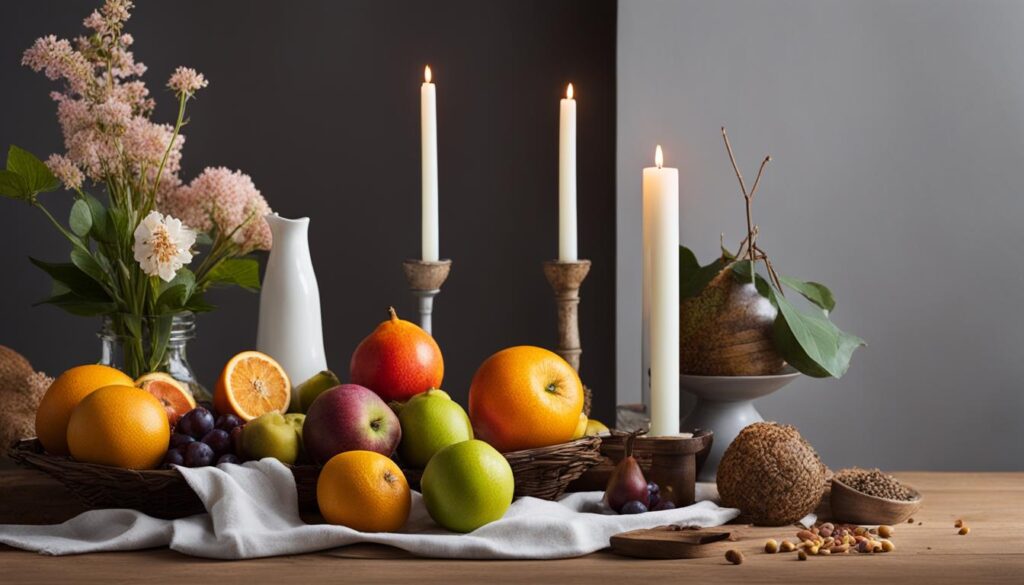How to Become a Still Life Photographer
Have you ever been captivated by the beauty and intricacy of a still life photograph? The way every object seems to tell a story, every detail meticulously arranged to create a visually stunning image. I have always been drawn to the art of still life photography, and how it captures the essence of objects in a way that speaks to our emotions.
For me, still life photography is more than just capturing objects; it’s about connecting with the viewer. It’s about evoking emotions, sparking memories, and telling stories through the lens. And if you share the same passion and desire to become a still life photographer, this article is for you.
This article will explore the essential steps and provide valuable tips to help you start your journey as a still life photographer. From understanding the creative and financial rewards to overcoming challenges and developing your skills, we’ll cover everything you need to know to establish yourself in this genre of photography.
Key Takeaways
- Still-life photography is more than just capturing objects; it’s about connecting with the viewer.
- This article will guide you through the essential steps to becoming a still-life photographer.
- We will explore the creative and financial rewards of still life photography.
- Overcoming challenges and continuous skill development are crucial in this genre.
- Stay tuned to learn about evaluating potential earnings, choosing the right equipment, mastering techniques, building a compelling portfolio, and more.
Embarking on a Still Life Photography Journey
Starting a still life photography journey is an exciting endeavour that requires a solid foundation in the fundamentals of this genre and a clear artistic vision. In this section, I will guide you through the initial steps you need to take to begin your still life photography journey. By setting goals, defining your style, acquiring the necessary equipment, and learning essential techniques, you will be well-prepared to embark on this creative adventure as a still life photographer.
One of the first steps in starting your still life photography journey is to set specific goals. Determine your goal in this field and establish milestones to track your progress. Whether your goal is to exhibit your work in galleries, sell prints, or enjoy the process of capturing still life images, having clear objectives will help you stay focused and motivated.
Defining your style is another crucial aspect of becoming a successful still life photographer. Take the time to explore different aesthetic approaches and identify the style that resonates with you. Experiment with various compositions, lighting techniques, and subject matters to discover your unique voice as an artist.

Acquiring the necessary equipment is essential for capturing exceptional still life photographs. Invest in a reliable camera and various lenses that will allow you to create different effects and perspectives. Additionally, consider investing in a tripod to ensure stability in your shots and proper lighting equipment to enhance the visual impact of your images.
Learning essential techniques is also vital in your still life photography journey. Familiarize yourself with concepts such as composition, lighting, and post-processing. Experiment with different lighting setups and explore the effects of natural and artificial lighting on your subjects. Practice techniques such as depth of field and focus stacking to achieve optimal sharpness and depth in your photographs.
Embarking on a still life photography journey is an opportunity to explore your creativity and develop your photography skills. By setting goals, defining your style, acquiring the necessary equipment, and learning essential techniques, you will be well-equipped to start your journey as a still life photographer. In the next section, we will delve deeper into the artistry and financial rewards of still life photography.
Demystifying the Art of Still Life Photography
Still life photography is a captivating art form that offers many creative and financial rewards. It allows photographers to express their artistic vision, explore different compositions, and capture the beauty of inanimate objects. At the same time, it presents challenges that require continuous skill development to overcome. This section will delve into the creative and financial rewards of still life photography while addressing the challenges photographers may encounter.
The Creative and Financial Rewards
The art of still life photography provides a platform for artistic expression and experimentation. Photographers can create visually stunning images by arranging objects, exploring colour palettes, and manipulating the lighting. Through still life photography, artists can showcase their unique perspectives and convey emotions, narratives, and conceptual ideas. This genre offers endless possibilities for creativity, enabling photographers to explore their imagination and push the boundaries of their craft.
Beyond the creative rewards, still life photography also has financial potential. It offers opportunities to monetize artistic talent and create income streams. Photographers can sell their prints, collaborate with businesses for advertising campaigns, license their images for commercial use, or even establish themselves as sought-after artists. The demand for high-quality still life photographs exists in various sectors, including advertising, publishing, e-commerce, and interior design, providing avenues for financial success.
Challenges and Skill Development
Despite its many rewards, still life photography comes with its own set of challenges. One of the main challenges is developing composition skills. The arrangement of objects in a visually appealing way requires an understanding of balance, symmetry, and the rule of thirds. Photographers must learn to create harmonious compositions that draw the viewer’s eye and tell a compelling story.
Lighting is another crucial aspect of still life photography that requires skillful manipulation. Photographers must master natural and artificial lighting techniques to create the desired mood, highlight textures, and create depth in their images. Additionally, staying inspired and maintaining a fresh perspective can be challenging when working within the confines of still life photography.
However, these challenges can be overcome with dedication and commitment to skill development. Photographers can take courses, attend workshops, and engage in continuous learning to enhance their composition and lighting skills. Experimentation and practice are also essential for refining techniques and finding one’s unique style in still life photography.
By addressing these challenges head-on and continuously developing their skills, still life photographers can unlock new levels of creativity and proficiency in their craft.

Evaluating Your Potential Earnings as a Still Life Photographer
Understanding the potential earnings as a still life photographer is essential for those considering it as a professional career. This section will provide insights into the income opportunities in still life photography.
Regarding potential earnings, the income of a still life photographer can vary based on various factors, including experience, reputation, location, and the types of projects undertaken. The rates can differ significantly depending on the client, the scope of the project, and the usage rights required.
Freelance work offers flexibility and lets you set your rates as you establish your reputation and clientele. Some still life photographers charge an hourly rate for their services, while others prefer to charge per project. The rates can range from £50 to £500 per hour or £200 to £5000 per project, depending on the complexity and requirements of the shoot. However, it’s important to remember that entry-level still life photographers may charge lower rates initially to build their portfolio and gain experience.
Collaborating with advertising firms can also provide lucrative opportunities. Advertising campaigns often require high-quality still life photographs for promotional materials, websites, and advertisements. Still life photographers working with advertising firms can earn significant income, with rates ranging from £500 to £5000 per project, depending on the client, the usage rights, and the production requirements.
It’s worth noting that the potential earnings can increase as you gain experience, develop a strong portfolio, and establish your reputation in the industry. Building a network of contacts, engaging with potential clients, and consistently producing exceptional work are essential steps in increasing your earning potential as a still life photographer.
Ultimately, the potential earnings as a still life photographer are influenced by your skills, creativity, business acumen, and ability to market yourself effectively. By continuously honing your craft, meeting client expectations, and delivering exceptional results, you can attract higher-paying clients and generate a sustainable income in still life photography.

| Project Type | Hourly Rate (£) | Project Rate (£) |
|---|---|---|
| Entry-level still life photography | £50 – £100 | £200 – £500 |
| Experienced still life photography | £100 – £500 | £500 – £5000 |
| Advertising campaigns | Negotiable | £500 – £5000+ |
Choosing the Right Equipment for Still Life Photography
When it comes to still life photography, selecting the right equipment is essential for capturing stunning and high-quality images. In this section, I will guide you through choosing the best lens and camera for still life photography. Additionally, I will highlight the significance of tripods and proper lighting in ensuring successful shots.
Finding the Best Lens and Camera
When choosing a lens for still life photography, consider your desired focal length and image quality. Prime lenses with a fixed focal length are often preferred for their sharpness and overall image quality. They allow you to have better control over the depth of field, resulting in greater detail and clarity in your photographs.
For still life photography, a macro lens is a great choice. It offers close-focusing capabilities, allowing you to precisely capture intricate details and textures. Look for a macro lens with a focal length between 50mm and 100mm for versatility in your compositions.
As for the camera, opt for a model that provides high resolution and excellent dynamic range. This will ensure you can capture fine details and accurately reproduce the subtle nuances of light and shadow in your still life images.

Why Tripods and Proper Lighting Matter
In still life photography, tripods are indispensable for achieving sharp and well-composed images. They provide stability and eliminate camera shake, especially when using longer exposure or narrow apertures. A sturdy tripod will also allow you to make precise adjustments to your composition without worrying about holding the camera steady.
Proper lighting is another crucial aspect of still life photography. It helps to create the desired mood, enhance textures, and highlight important details. Experiment with natural light, diffused artificial light sources, or a combination of both to achieve the desired effect in your photographs.
Investing in a reliable tripod and understanding how to manipulate lighting will give you greater control over the technical aspects of your still life images. This control ultimately translates into more consistent and visually appealing results.
Now that you have a better understanding of the importance of choosing the right equipment, let’s move on to the next section, where we will delve into mastering the craft of still life photography and explore various techniques for composition and lighting.
Mastering the Craft: Techniques and Composition
To become a proficient still life photographer, it is essential to master specific techniques and understand the significance of composition. These elements play a crucial role in creating visually captivating still life images. This section will explore different lighting techniques and discuss the importance of composition and subject choice in still life photography.
Experimenting with Different Types of Lighting

Lighting is a key aspect of still life photography, as it determines your images’ mood, atmosphere, and visual impact. Experimenting with different lighting techniques can help you achieve the look and feel you desire for your compositions.
There are two primary types of lighting commonly used in still life photography:
- Natural Light: Natural light can create a soft and organic look in your photographs. Positioning your subject near a window or shooting outdoors during the golden hour can create beautiful lighting conditions.
- Artificial Lighting Setups: Artificial lights, such as studio strobes or continuous lights, allow for more control over the lighting in your still life compositions. To create dramatic and compelling effects, you can experiment with various lighting setups, such as three-point or Rembrandt lighting.
By exploring and practising different lighting techniques, you can develop your skills and enhance the visual impact of your still life photographs.
The Importance of Composition and Subject Choice
Composition plays a vital role in creating visually appealing still life imagery. It involves arranging and organizing the elements within your frame to create a harmonious and visually balanced composition. Additionally, choosing the right subject is crucial as it determines the focus and interest of your photograph.
When composing your still life images, consider the following:
- Rule of Thirds: Positioning your main subjects or points of interest along the gridlines or at the intersection points of the imaginary tic-tac-toe grid can create a visually balanced composition.
- Leading Lines: Incorporating lines, such as the edges of objects or shadows, can guide the viewer’s eyes and add depth and interest to your composition.
- Negative Space: Leaving space around your subject can help draw attention to the main focus and create a sense of simplicity and elegance.
Furthermore, selecting the right subject is crucial for capturing visually captivating still life photographs. Choose subjects that have interesting textures, shapes, colours, or symbolic meanings. Experiment with different objects, fruits, flowers, or everyday items to find subjects that align with your artistic vision.
By understanding the importance of composition and subject choice, you can create visually stunning still life photographs that engage and captivate your viewers.
| Techniques | Composition | Lighting | Subject Choice |
|---|---|---|---|
| Experimenting with different lighting setups | Utilizing the rule of thirds | Mastering natural light | Choosing subjects with interesting textures |
| Exploring different lighting techniques | Incorporating leading lines | Using artificial lights for more control | Exploring subjects with unique shapes |
| Understanding the impact of lighting on mood | Creating balance and harmony in composition | Using subjects with vibrant colours | Using subjects with vibrant colors |
Building and Showcasing a Compelling Portfolio
Establishing your presence as a still life photographer requires building an impressive portfolio that showcases your skills and creativity. A well-curated collection of work can attract attention, impress potential clients, and open doors to new opportunities. In this section, I will guide you through creating a diverse portfolio that highlights your expertise in still life photography.
Creating a Diverse Collection of Work
An essential aspect of building a compelling portfolio is showcasing a diverse range of still life photography. A diverse collection demonstrates your versatility and ability to capture various subjects, styles, and moods. To achieve this, focus on capturing images of different objects, experimenting with different lighting techniques, and exploring various compositions.
Whether you capture vibrant fruits, exquisite flowers, intricate objects, or all of the above, aim to create a portfolio that displays the breadth of your skills and creativity. Including various subject matters and approaches will captivate viewers and demonstrate your ability to create visually stunning still life photographs.
Additionally, consider incorporating different themes or concepts into your portfolio. This can showcase your ability to tell stories and evoke emotions through your work. From minimalist compositions to rich and elaborate setups, use your diverse collection of work to demonstrate your versatility and artistic range as a still life photographer.
Leveraging Online Platforms for Exposure
Once you have built a compelling portfolio, leveraging online platforms to gain exposure and attract potential clients and opportunities is crucial. The digital age has provided photographers numerous online platforms to showcase their work and connect with a broader audience.
Consider creating a professional website or online portfolio to showcase your still life photography. This allows you to present your work in a curated and visually appealing manner, providing potential clients with a comprehensive overview of your skills and style. Ensure that your online portfolio is user-friendly, easy to navigate, and prominently showcases your diverse collection of work.
In addition to having your website, take advantage of social media platforms such as Instagram, Facebook, and Pinterest. These platforms provide an opportunity to reach a wider audience, engage with potential clients, and connect with fellow photographers and industry professionals. Regularly share your still life photographs on these platforms, using descriptive captions and relevant hashtags to increase your visibility.
Participating in online photography communities and forums can also enhance your exposure. Engage with other photographers, share your knowledge and expertise, and seek feedback. Building a robust online presence allows you to showcase your portfolio, demonstrate your commitment to your craft and engage with the larger photography community.
To summarize, building a compelling portfolio involves creating a diverse collection of work that showcases your skills and creativity in still life photography. Leveraging online platforms such as professional websites and social media can help you gain exposure and attract potential clients. With a well-curated portfolio and a strong online presence, you can establish yourself as a successful still life photographer and attract exciting opportunities in the industry.
Strategising Your Market Presence
Building a successful still life photography business requires careful strategizing to establish a strong market presence. In this section, I will guide you through key steps to define your target audience, develop effective marketing strategies, harness the power of social media, and expand your network. By following these strategies, you can attract clients and elevate your presence in the still life photography industry.
Define Your Target Audience
Before implementing any marketing strategies, it is essential to define your target audience. Understanding your ideal clients will help you tailor your promotional efforts and attract the right clientele. Identify your target audience’s demographics, interests, and preferences, and align your photography style and messaging accordingly.
Develop Marketing Strategies
To effectively market your still life photography business, you need a well-defined strategy. Consider the following approaches:
- Website and Portfolio: Create a visually appealing, user-friendly website showcasing your best work. Update your portfolio regularly to highlight your latest projects and demonstrate your expertise in still life photography.
- Content Marketing: Produce informative, engaging content that resonates with your target audience. Write blog posts, create video tutorials, or offer free resources related to still life photography. Share valuable tips and insights to establish yourself as an industry authority.
- Email Marketing: Build an email list of interested prospects and existing clients. Send regular newsletters with updates, special offers, and exclusive discounts to keep your audience engaged and aware of your services.
- Collaborations: Seek opportunities to collaborate with other professionals in the photography and creative industries. Partnering with complementary businesses can help expand your reach and attract new clients.
Utilize Social Media Platforms
Social media platforms offer a valuable opportunity to promote your still life photography business. Consider the following tips:
“Social media platforms provide a dynamic and interactive space to showcase your work, engage with your target audience, and establish your personal brand as a still life photographer.”
- Choose the Right Platforms: Identify the social media platforms that align with your target audience. Facebook, Instagram, and Pinterest are popular for visual-focused industries like still life photography.
- Consistent Branding: Maintain a consistent brand identity across all social media platforms. Use high-quality images, compelling captions, and relevant hashtags to create a cohesive brand image.
- Engage with Your Audience: Respond promptly to comments, messages, and inquiries. Engage in conversations, join relevant groups or communities, and participate in industry-related discussions to build strong connections.
- Share Behind-the-Scenes Content: Give your audience a glimpse into your creative process by sharing behind-the-scenes photos and videos. This helps humanize your brand and fosters a deeper connection with your followers.
Network and Connect with Potential Clients
Networking is vital in expanding your market presence as a still life photographer. Consider the following networking strategies:
- Attend Industry Events: Participate in photography exhibitions, trade shows, and workshops to connect with potential clients and industry professionals. Networking at these events can lead to valuable collaborations and business opportunities.
- Join Online Communities: Engage in online forums, social media groups, and photography communities to exchange ideas, seek advice, and connect with like-minded individuals in the industry.
- Collaborate with Influencers: Identify influencers or bloggers who align with your photography style or target audience. Collaborate with them on creative projects or offer free shoots in exchange for exposure to their followers.
- Offer Referral Programs: Encourage satisfied clients to refer their friends and colleagues to your services by offering incentives like discounts or exclusive packages. Word-of-mouth referrals can be a powerful tool in growing your client base.
By implementing these strategies, you can strategically position your still life photography business in the market and attract clients who appreciate your unique artistic style and creative vision.

Launching a Successful Still Life Photography Business
Launching a successful still life photography business requires careful planning and consideration. Aspiring photographers must navigate the competitive industry by identifying their unique selling points, choosing the right workspace, and understanding how to sell their art. By focusing on these key aspects, photographers can lay a solid foundation for their business and increase their chances of success.
Identifying Your Unique Selling Point
To stand out in the saturated photography market, it’s crucial to identify your unique selling point. What sets you apart from other photographers? Is it your distinctive style, creative approach to composition, or ability to capture emotions through still life imagery? By defining what makes your work special, you can attract clients who appreciate your unique perspective and are willing to invest in your art.
Discover the elements that make your photography unique through self-reflection and market research. Consider your passions, experiences, and personal strengths. Emphasize these qualities in your marketing materials and use them as a selling point to differentiate yourself from competitors. Whether through creative storytelling, impeccable attention to detail, or innovative lighting, showcasing your unique selling point will help you attract the right clients and build a strong brand presence.
Choosing a Workspace and Selling Your Art
Selecting the right workspace is essential for a still life photographer. While some photographers prefer studio settings, others may opt for a more natural environment. Assess your needs and consider factors such as space, lighting, and accessibility. Ensure your workspace reflects your creative vision and allows you to produce high-quality images consistently.
When selling your art, explore various avenues to reach a wider audience. Online platforms such as your website, social media channels, and e-commerce platforms provide easy access to potential buyers. Utilize these platforms to showcase your portfolio, communicate your unique style, and engage with your target audience.

In addition to online platforms, consider participating in exhibitions, collaborating with local galleries, or partnering with interior designers and art consultants. These opportunities can help you gain exposure, build connections, and sell your art to collectors and enthusiasts. Networking with professionals in the industry, attending photography events, and actively seeking collaboration opportunities can also boost your visibility and increase your chances of success.
Launching a still life photography business requires dedication, perseverance, and a strong market understanding. By identifying your unique selling point, choosing a suitable workspace, and leveraging various channels to sell your art, you can establish yourself as a successful still life photographer and thrive in the dynamic world of photography.
Expanding Your Horizons Through Networking
Expanding your horizons as a still life photographer involves networking and continuous learning. Forming valuable industry connections and building relationships with potential collaborators, clients, and mentors is essential. By actively networking, you can create opportunities for yourself and gain valuable insights from others in the field.
Industry connections can provide guidance, inspiration, and even collaborations that elevate your work. Attending industry events, workshops, and conferences is important to meet like-minded individuals and establish meaningful connections. Engaging with online photography communities and forums can also help you expand your network.
In addition to networking, continuous learning is vital for your growth as a still life photographer. The industry constantly evolves, and staying updated on the latest techniques, trends, and technologies will keep you ahead. Participating in workshops, online courses, and mentorship programs can enhance your skills and help you adapt to industry changes.
Expanding your horizons through networking and continuous learning will open doors to new possibilities and opportunities in your photography career. Building strong industry connections and staying committed to learning will contribute to your professional development and success as a still life photographer.
Conclusion
In conclusion, becoming a successful still life photographer requires a combination of passion, dedication, and continuous learning. Throughout this article, we have explored the essential steps and tips for embarking on your still life photography journey. You can establish yourself in this exciting and rewarding field by understanding the creative and financial rewards, overcoming challenges, and developing your skills.
Remember, as a still life photographer, you can capture and create visually captivating images that convey stories and emotions. It is essential to choose the right equipment, master the craft through various techniques and composition principles, and build a compelling portfolio to showcase your unique style.
Additionally, strategizing your market presence, launching your own business, expanding your horizons through networking, and continuous learning are crucial elements for long-term success in the still life photography industry.
So, seize the opportunity and start your still life photography journey today. With passion, dedication, and the right skills, you have the potential to achieve your goals and create a fulfilling career in this captivating art form.
FAQ’s
Q: What is still life photography?
A: Still life photography is a genre of photography that focuses on inanimate objects arranged in a composition to create a visually appealing image.
Q: What are some types of still life photography?
A: Some types of still life photography include product photography, food photography, fine art photography, and found still life photography.
Q: What equipment do I need for still life photography?
A: For still life photography, you will need a camera, lenses suitable for still life photography, props to enhance your composition, and lighting equipment for proper illumination.
Q: What are some photography tips for capturing stunning still lifes?
A: Some photography tips for capturing stunning still lifes include using natural light whenever possible, paying attention to composition and framing, experimenting with different angles, and using a tripod for stability.
Q: How can I create a still life scene?
A: To create a still life scene, choose your subject or objects, arrange them in an interesting composition, consider the background and lighting, and experiment with different setups until you achieve the desired look.
Q: Why is still life photography a popular subject for photographers?
A: Still life photography allows photographers complete control over the composition, lighting, and arrangement of objects, making it a creative and challenging genre that can result in stunning and visually captivating images.
Q: What are some still life photography ideas to inspire my work?
A: Some still life photography ideas include capturing a bowl of fruit, arranging flowers in a vase, showcasing different textures and surfaces, and creating unique compositions using everyday objects.








